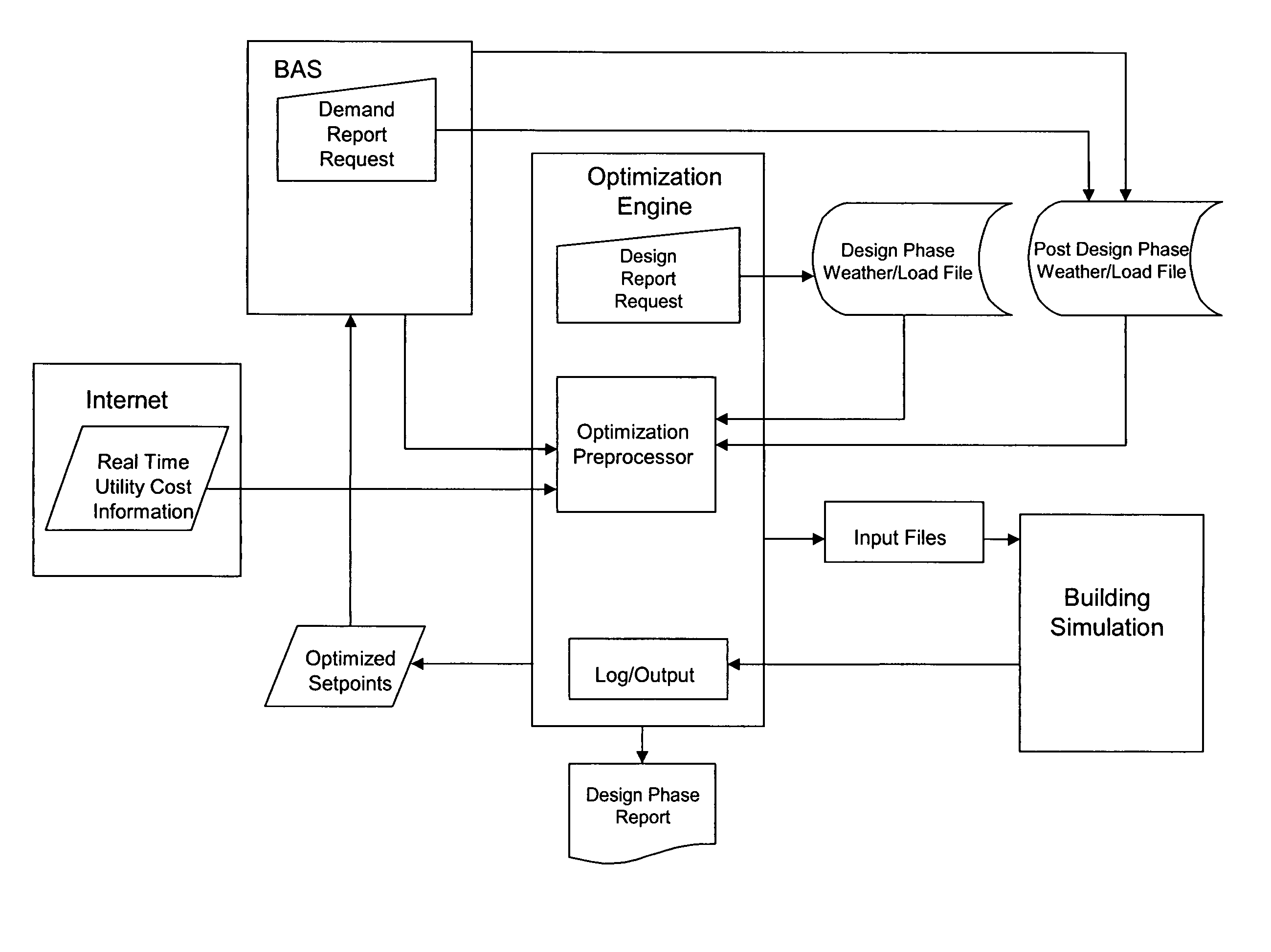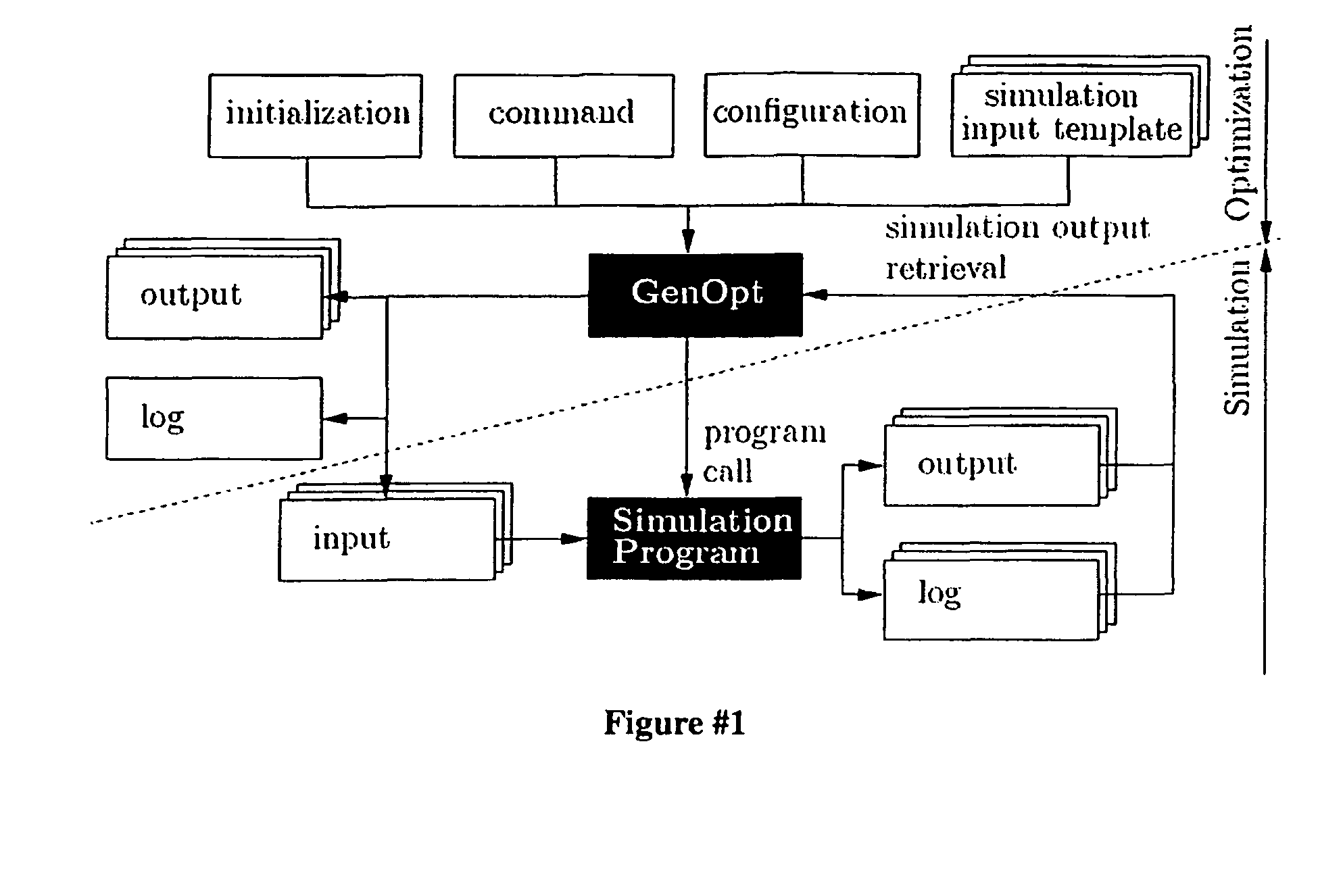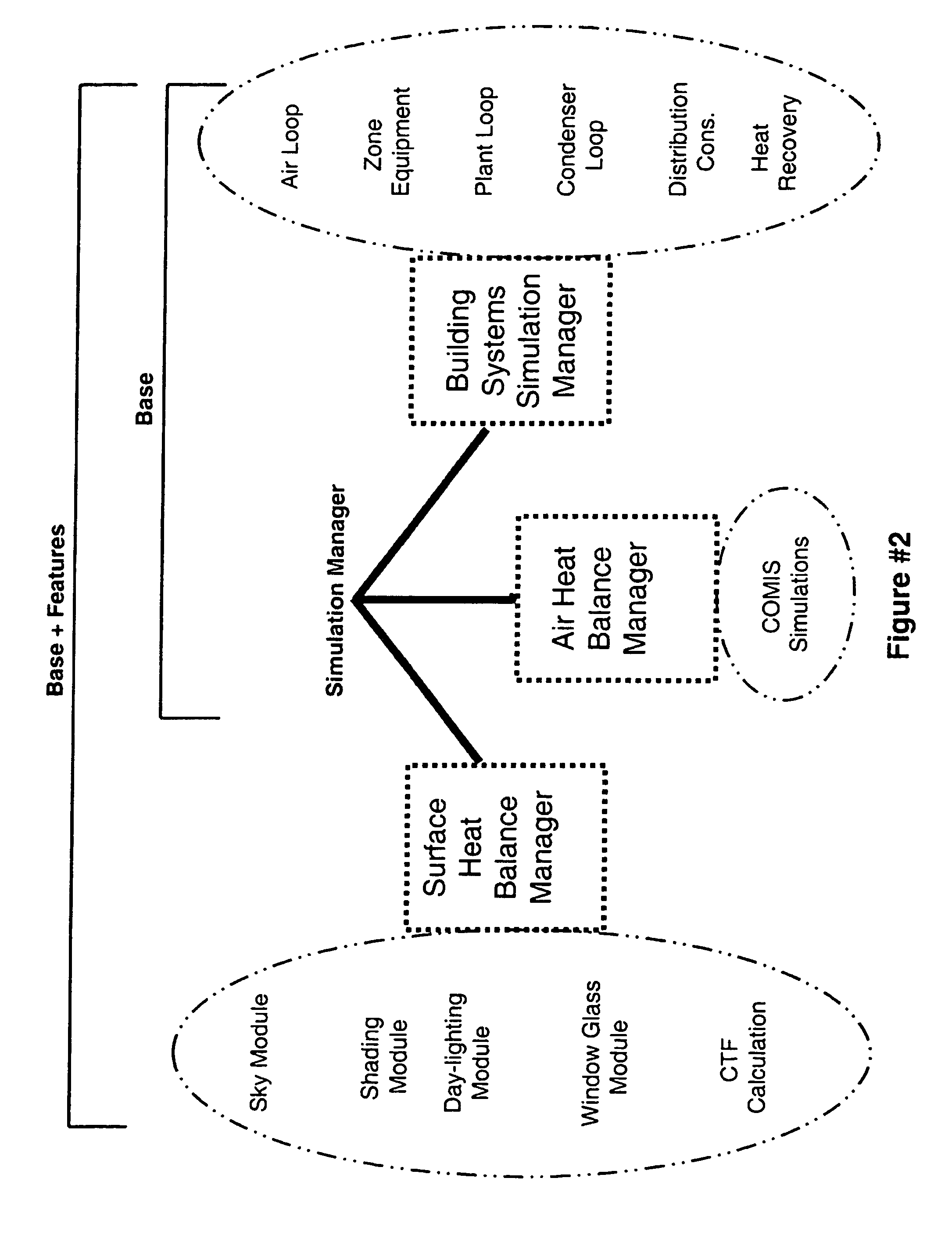Real-time global optimization of building setpoints and sequence of operation
a global optimization and building technology, applied in the direction of electrical programme control, program control, instruments, etc., can solve the problems of not fully addressing and solving the need for optimization and efficiency in today's market, and not the best device by which to effectuate optimization of efficiency, so as to achieve the effect of convenient us
- Summary
- Abstract
- Description
- Claims
- Application Information
AI Technical Summary
Benefits of technology
Problems solved by technology
Method used
Image
Examples
Embodiment Construction
[0027]The improved optimization configuration of the present invention is best shown in FIG. 5 as including a building automation system, energy simulation software and an optimization engine working in concert with one another.
[0028]In order to address the need for an integrated / comprehensive view of building energy consumption, this configuration solves the optimization of interactive loops simultaneously to ensure the control loops are working in concert with one another while reducing localized minimums and maintaining maximum accuracy. It should be noted, however, that in especially large facilities, there may be the need to solve multiple global problems in several smaller parts and sum the results and while this may speed up the calculations it may also add inaccuracy to the result, and therefore it is preferred that the following description of the preferred method of the present invention be applied whenever possible.
Building Automation System (BAS)
[0029]1. General Descript...
PUM
 Login to View More
Login to View More Abstract
Description
Claims
Application Information
 Login to View More
Login to View More - R&D
- Intellectual Property
- Life Sciences
- Materials
- Tech Scout
- Unparalleled Data Quality
- Higher Quality Content
- 60% Fewer Hallucinations
Browse by: Latest US Patents, China's latest patents, Technical Efficacy Thesaurus, Application Domain, Technology Topic, Popular Technical Reports.
© 2025 PatSnap. All rights reserved.Legal|Privacy policy|Modern Slavery Act Transparency Statement|Sitemap|About US| Contact US: help@patsnap.com



